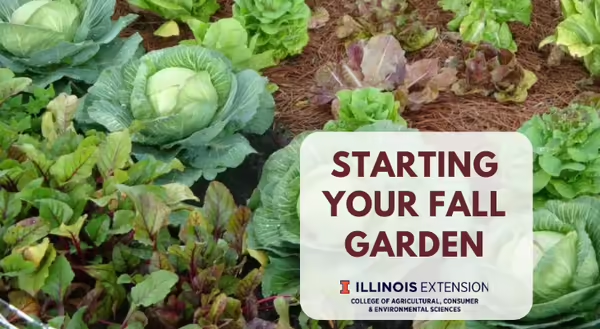
As we enjoy fresh tomatoes, cucumbers, zucchini, and other vegetables from our garden this summer, it is time to start planning the garden for fall production. Many of the cool-season vegetables we plant in early spring can be planted again in late summer to early fall to extend the growing season and have fresh produce for a longer period.
After working away in the warm summer heat, it is difficult to think of continuing the garden for another season; however, with a fall garden planting, we often experience cooler weather with fewer pests, and preparation often involves less work as the soil was already worked in the spring. Crop residue from previous crops and weeds should be removed. It is also an option to add 1 to 1.5 pounds of an all-purpose fertilizer (example 10-10-10) per 100 square feet, or composted organic matter can be incorporated. Crops to be grown in a fall garden can be transplanted or direct seeded. Transplants can be more difficult to find this time of year, so starting them yourself is always an option. When direct seeding fall grown vegetables, it is important to keep the upper ¼ to ½ inch of soil moist to help with germination. Although these plants are being grown for fall production, they are being established in mid to late summer, when we can experience the soil drying out quickly.
Before choosing which crops you will grow, it is important to know when your first frost usually occurs; you can find frost dates at the State Climatology page. It is also important to choose vegetables that fall in the semi-hardy and hardy category of plants. Below are suggestions of planting dates for fall vegetable production throughout the state of Illinois. Many of the crops listed below are not affected by frost or moderate freezes.
Beets, broccoli, cabbage, carrots, cauliflower, Chinese cabbage, endive, snap beans, summer squash:
- Southern Illinois – July 24 to August 3
- Central Illinois – July 10 to 20
- Northern Illinois – June 25 to July 5
Kohlrabi, leaf lettuce, mustard, turnip, winter radish:
- Southern Illinois – August 15 to 24
- Central Illinois – July 10 to 20
- Northern Illinois – July 17 to 26
Leaf lettuce, mustard, spinach, spring radish:
Southern Illinois – September 8 to 17
Central Illinois – August 25 to September 5
Northern Illinois – August 11 to 20
If disease was an issue during the summer growing season, crop rotation will be beneficial for fall production. Avoid planting vegetables within the same family in the same location more than once every three years.
Good Growing Fact: Often cool season crops will bolt and become tough and bitter with the summer heat. When planted later in the season for fall production, these vegetables are better quality with more flavor.